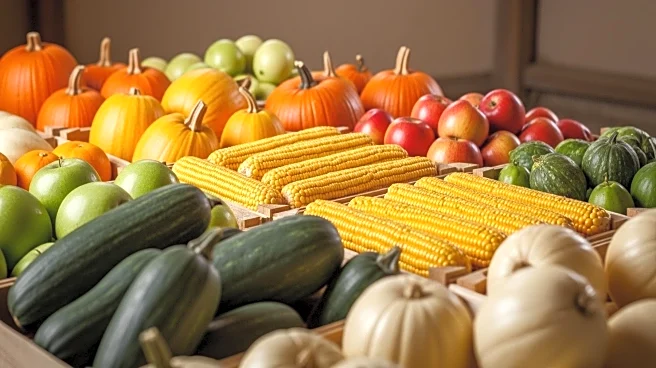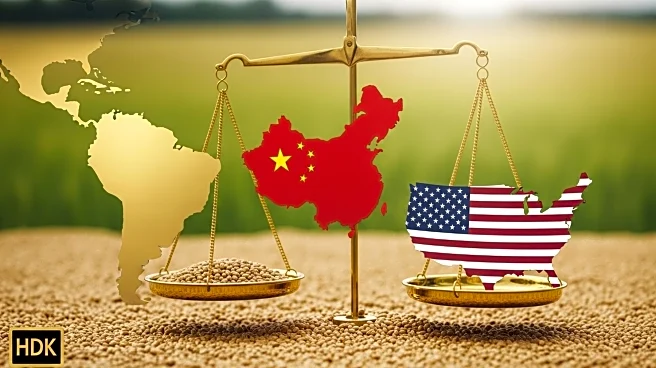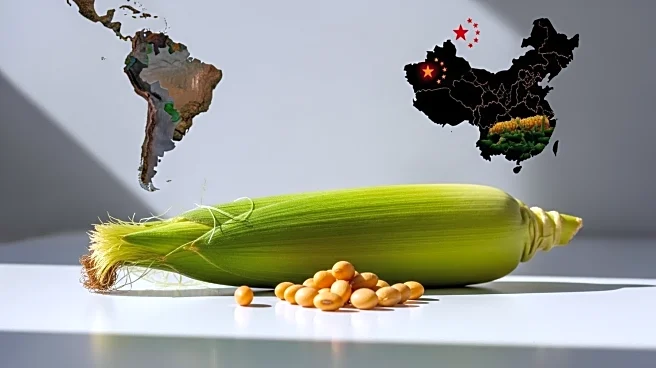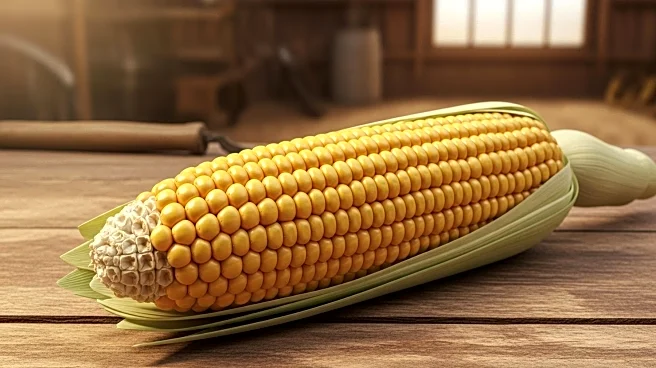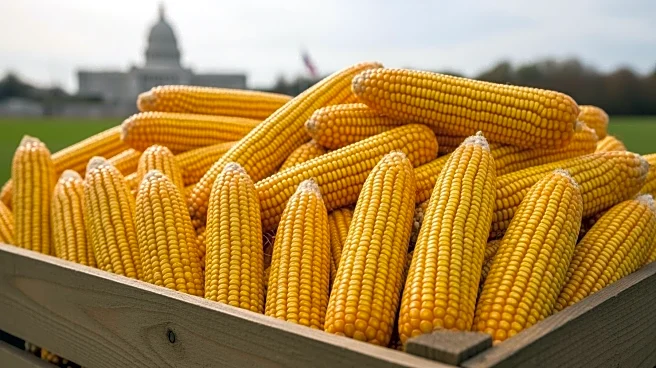Rapid Read • 8 min read
The USDA's August Supply and Demand Report has projected record crop yields for corn and soybeans, presenting farmers with challenging decisions regarding storage and sales. Corn acreage has increased from 86.7 to 88.6 million acres, with yield potential rising from 181 to 188.8 bushels per acre. This has resulted in a significant increase in ending stock projections, from 1.66 billion bushels last month to 2.11 billion bushels. Despite a drop in market prices to $3.92, strong demand has helped stabilize prices near the $4 mark. Meanwhile, soybean acreage has decreased from 82.5 to 80.1 million acres, but yield estimates have risen from 52.5 to 53.6 bushels per acre, reducing potential ending stocks from 310 to 290. The absence of Chinese demand due to trade concerns has created uncertainty, although soybeans have rallied to $10.60, with resistance at $10.74.
AD
These projections are crucial for U.S. farmers as they navigate the complexities of crop storage and sales amidst fluctuating market conditions. The increased yield projections for corn and soybeans could lead to lower prices, impacting farmers' profitability. The absence of Chinese demand further complicates the market dynamics, potentially affecting export opportunities. Farmers must weigh the costs of storage against immediate cash sales, considering disease concerns like sudden death syndrome in soybeans and southern rust in corn, which could affect yields. The market's response to these projections will influence future planting decisions and financial strategies for farmers across the country.
As harvest approaches, farmers will need to make strategic decisions regarding storage and sales. December corn futures are expected to hold support near $4, with resistance at $4.15 and $4.30, while soybeans may trade between $10 and $10.75. Farmers might consider selling out-of-the-money calls to offset storage costs and explore hedging options for next year's crops. The market will continue to monitor trade developments with China, which could significantly impact demand and pricing.
The broader implications of these projections include potential shifts in agricultural policy and trade negotiations. The U.S. may need to explore alternative markets to compensate for reduced Chinese demand. Additionally, the focus on disease management in crops highlights the importance of research and development in agricultural practices to ensure sustainable yields.
AD
More Stories You Might Enjoy
